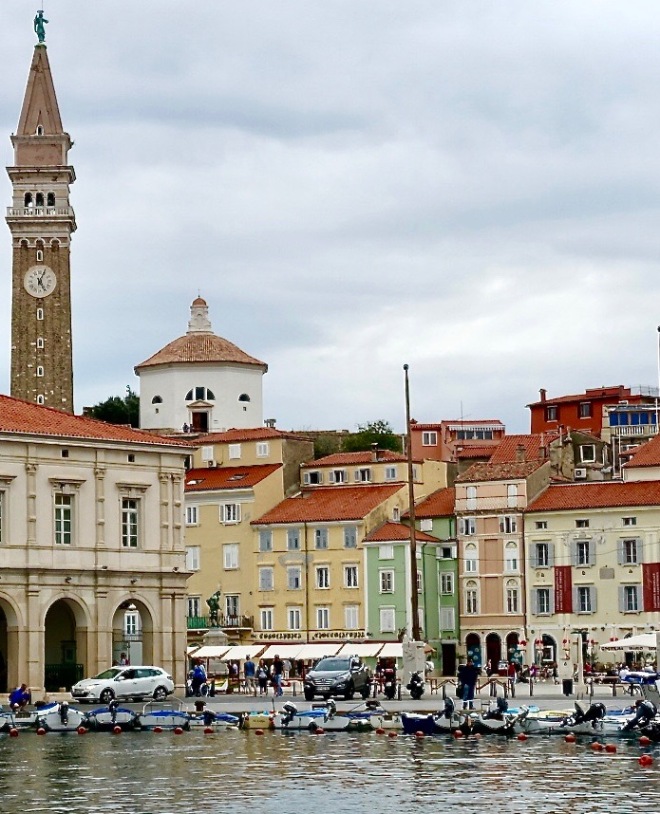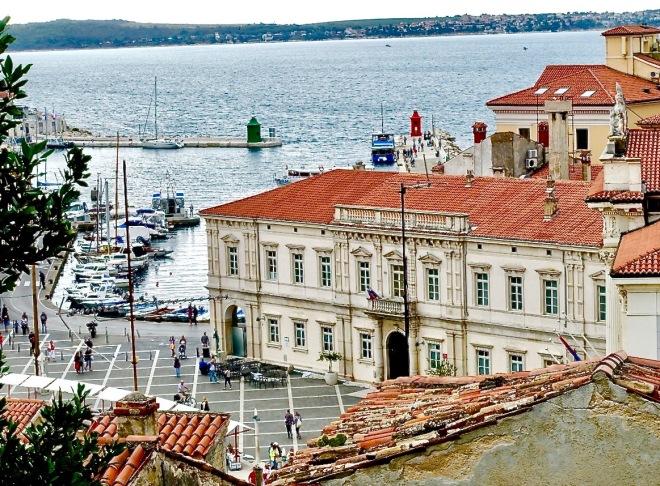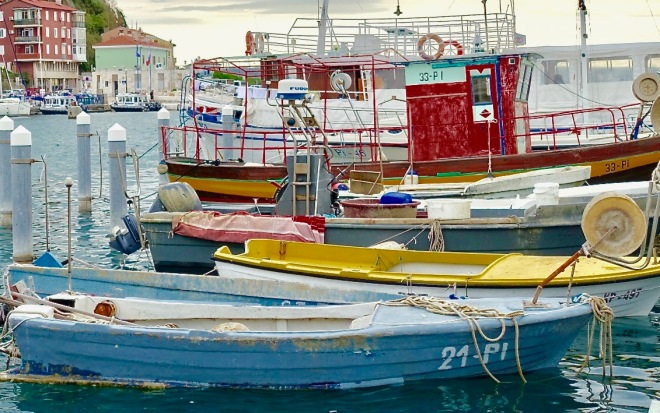In Slovenia, there’s a local joke that nothing is more than one hour away.
In a compact country that has only 43 kilometres of coastline, it’s fairly easy to move from centre to centre and one geographical feature to another.
In one direction, you’ll encounter stunning snow-capped alps and beautiful Lake Bled; in another is the striking capital city of Ljubljana; Italy is one hour away in yet another direction; or some of the world’s biggest limestone caves beneath the Karst Plateau.
And, in the country’s south-west is the charming medieval walled town of Piran, on the Adriatic Coast.
Long regarded as a hidden treasure by travellers in the know and the source of acclaimed world class salt, Fleur de Sel, Piran is a remarkably attractive and photogenic old port town with a complex history. These days, visitors flock to the town to enjoy community events, the culinary offerings and natural attractions

We travelled to Piran because we’d heard so much about its astonishing mixture of architecture that reflects an unusual history – to say the least!
For example:
- by the 7th Century, Piran was under Byzantine rule
- in about 952 AD, it became part of the Holy Roman Empire.
- from 1283 to 1797, Piran was in the Republic of Venice
- in 1797, it was annexed to the Austrian Empire
- between 1806 and 1814, it was ceded to the Napoleonic Empire
- at the end of the 19th Century and the start of the 20th Century, Piran was Austro-Hungarian
- after the First World War, the town was ceded to Italy.
- in 1954, Piran was annexed to Yugoslavia – and much of its population chose to move to Italy or abroard.
- since 1991, the town has been part of Slovenia.
If that isn’t confusing enough, the town is bilingual, with both Slovene and Italian listed as official languages.

And, its municipality borders Croatia to the south and faces Italy across the Gulf of Trieste and the Adriatic Sea.
This melting pot of history gives Piran a distinctive and attractive appearance.
The Venetian influence is strong, with an imposing town square and sweep of red rooftops.
The remains of the town wall have a Roman look, although in reality they have been altered several times through the years.
There are three walls, dating to the 7th Century and a total of seven gates or entrances to the town.
And the medieval feel is also pronounced, with a lot of narrow streets and compact houses.

And through its complex history, Piran flourished largely because of its salt pans, which were established in 804 AD.
We walked to the remains of the third town wall and nearby St George’s Church which dominates the main hill above the town .
Then we strolled along the breakwall to the tip of Piran peninsula, watching young swimmers braving the cold waters of the Adriatic.
After a coffee in one of the many cafes and seafood restaurants along the waterfront, we returned to Tartini Square, named after one of the towns most famous residents – the 17th Century violinist, Giuseppe Tartini
It may be only an hour away from everywhere in Slovenia, but medieval Piran is a stunning Adriatic coastal resort that is a ‘must see’ when visiting Slovenia.
Senior-friendly mark: 7 out of 10. Although the town centre and foreshore are flat, there are a lot of steep and narrow streets that cannot be avoided in such an old city
Note: The writer was flown to Europe courtesy of Scoot Airlines


